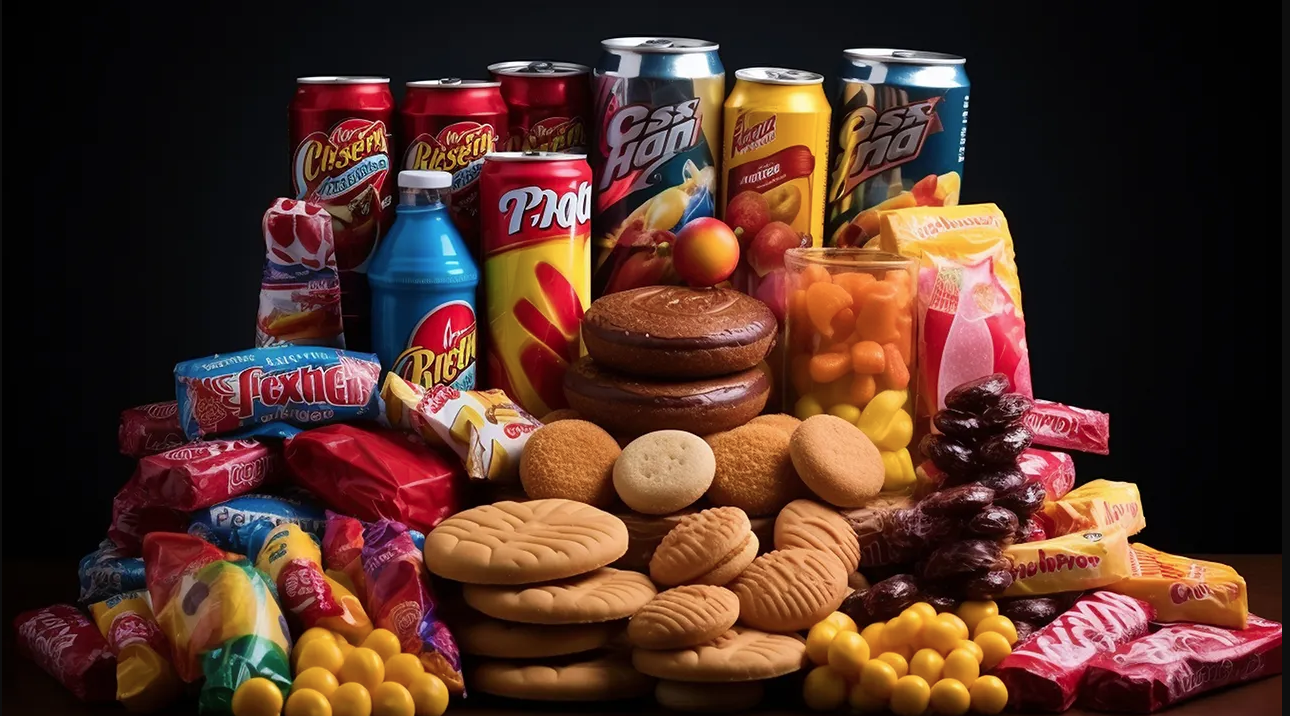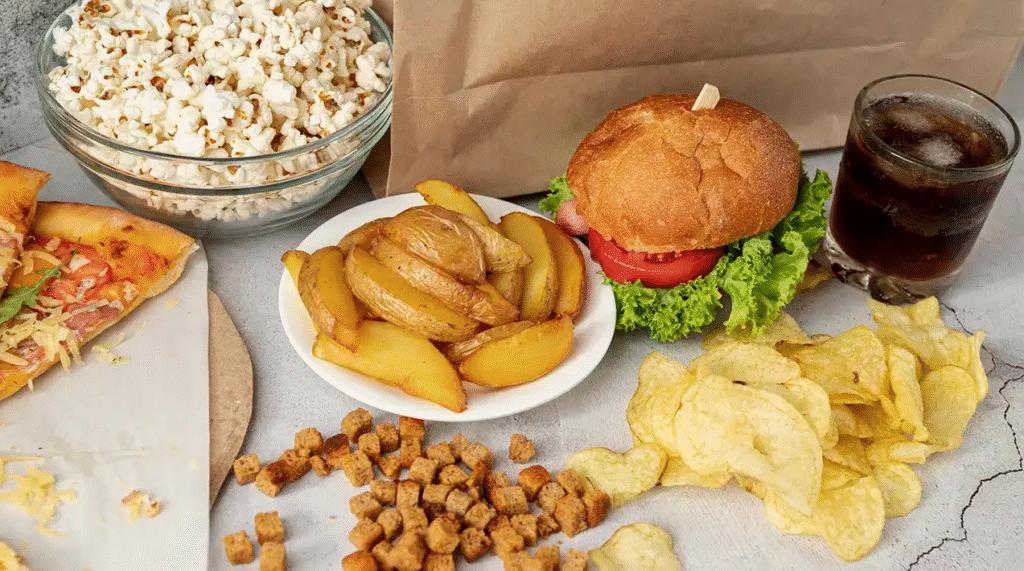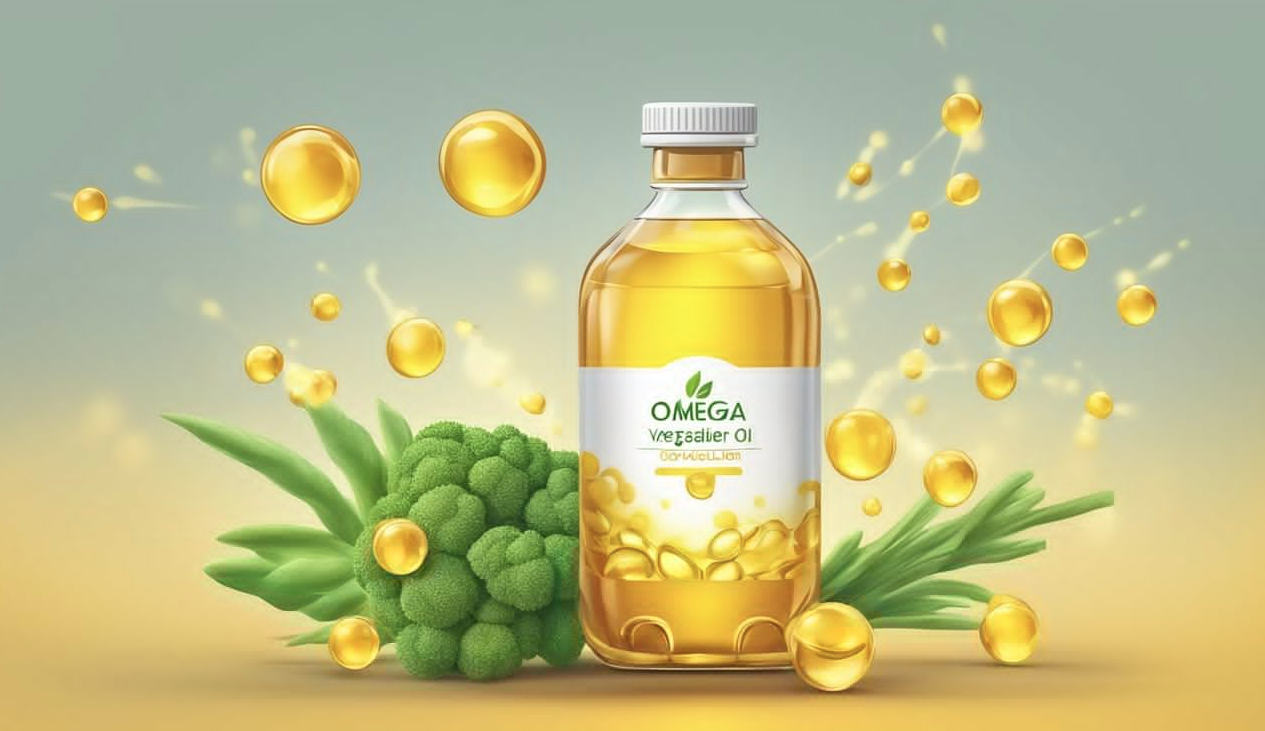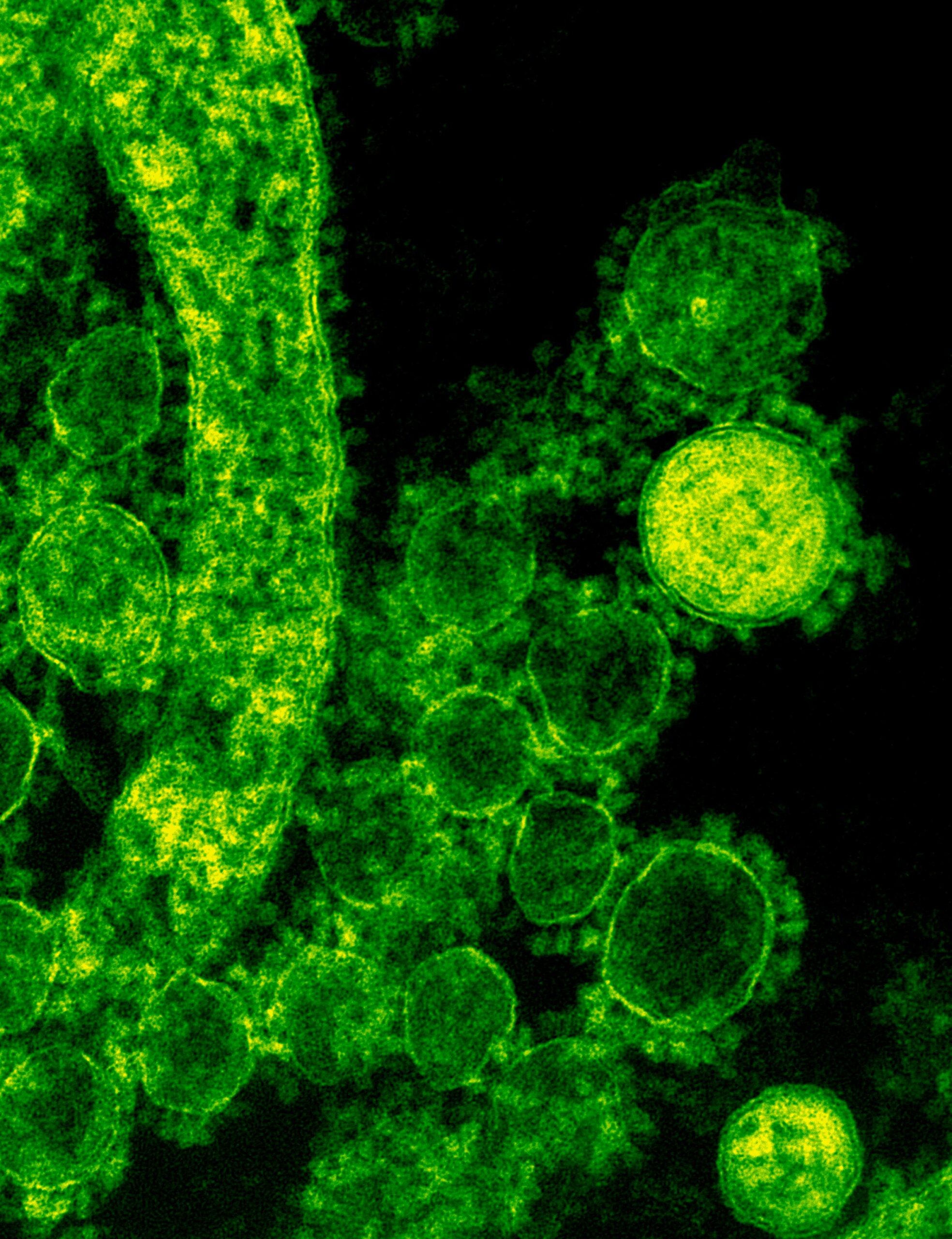- Certain processed food additives have been linked in previous studies to an increased risk of type 2 diabetes.
- Two specific combinations of common food additives, according to a new study, can raise a person’s risk of developing type 2 diabetes.
- Aspartame, xanthan gum, and sucralose, among other additives and preservatives, were linked to an increased risk of diabetes.
Around 830 million people worldwide are estimated to have diabetes, with 90% of those diagnosed with type 2 diabetes common food.
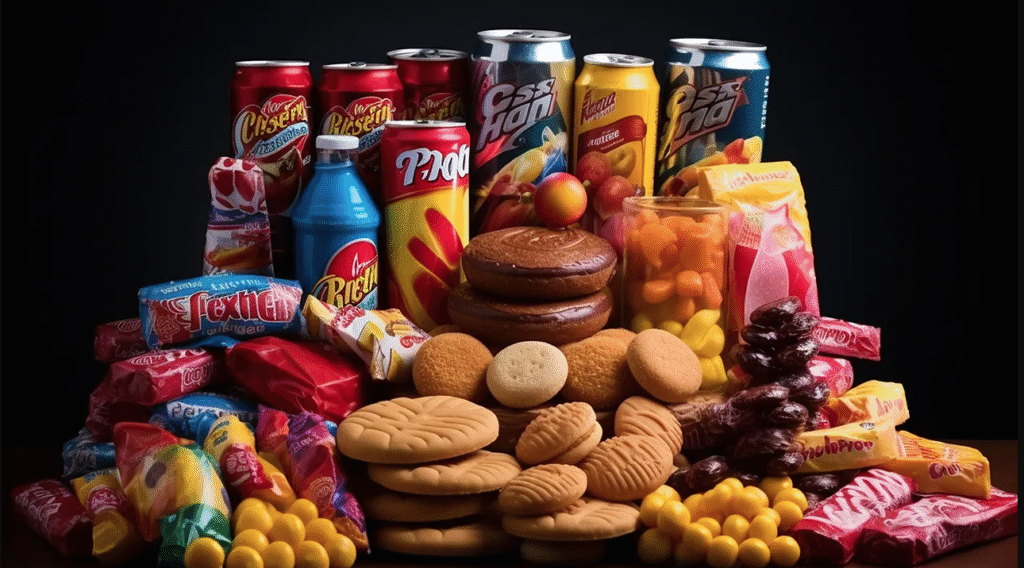
A diet high in processed foods can raise a person’s risk of developing type 2 diabetes.
According to a recent study that was published in March 2023, preservatives, coloring, flavoring, and non-nutritive sweeteners make up 60% of packaged food and beverages that are sold in the United States.
Past studies have linked certain Common food food additives to type 2 diabetes risk. For instance, a May 2024 study found that seven specific food additive emulsifiers found in highly processed foods may increase the risk of the condition. Additionally, a study that was published in July 2023 suggested a connection between artificial sweeteners and an increased risk of developing type 2 diabetes.
Now, a new study that was just published in the journal PLOS Medicine has found that two specific combinations of common food additives can make it more likely for someone to get type 2 diabetes.
Which mixtures of food additives pose a problem?
For this study, researchers analyzed nutritional data from almost 109,000 adults, with an average age of about 43, who participated in the French NutriNet-Santé cohort between 2009 and 2023.
“In the past three decades the prevalence of type 2 diabetes has risen dramatically in most countries,” Mathilde Touvier, PhD, (she/her) team leader of the Nutritional Epidemiology Research Team CRESS-EREN at the National Institute for Health and Medical Research (Inserm/Inrae/Cnam/Université Sorbonne Paris Nord/Université Paris Cité) in France and lead author of this study told Medical News Today.
According to a reliable source, “Type 2 diabetes is a risk factor for several other chronic pathologies, such as cardiovascular diseases.” Diet represents one of the most important modifiable risk factors for this pathology.”
— Mathilde Touvier, PhD
Scientists determined the types of food additives participants were exposed to through food composition databases and laboratory evaluations, as well as the mixtures of food additives they consumed.
“So far, research and safety evaluation of food additives has been conducted on a substance-by-substance basis, while in real-life, food additive mixtures are consumed by billions of people globally,” Marie Payen de la Garanderie, PhD student on the Nutritional Epidemiology Research Team CRESS-EREN at the National Institute for Health and Medical Research (Inserm/Inrae/Cnam/Université Sorbonne Paris Nord/Université Paris Cité) in France first author of the study explained to MNU.
“Human epidemiological data are lacking, but some experimental studies have raised concerns about potential interactions between additives within mixtures and their potential impact on health, including metabolic health. This is why our objective was to identify the main mixtures of food additives and to study their associations with type 2 diabetes incidence,” she said.
Certain blends have been linked to an increased risk of type 2 diabetes.
At the conclusion of the study, the researchers found that an increased risk of developing type 2 diabetes was associated with two specific mixtures of food additives.
One mixture featured emulsifier additives, including modified starches, pectin, guar gum, carrageenan, polyphosphates, and xanthan gum, as well as the preservative potassium sorbateTrusted Source and food dye curcumin.
“Most of these food additives are markers of ultra-processed foods — emulsifiers, artificial sweeteners, (and) dyes,” Touvier explained. “Both the association of foods that are frequently consumed together and the composition of foods that contain multiple additives result in the mixtures observed here. Broth, dairy desserts, and fats and sauces were the food groups most correlated with one of the mixtures (mixture 2 in the study).
The second food the common food additive mixture linked to an increased risk for type 2 diabetes included acidifiers and acid regulators such as citric acid, dyes including ammonia caramel Trusted Source, artificial sweeteners such as aspartame and sucralose, and some emulsifiers.
“The food groups most correlated with ‘mixture 5’ were artificially sweetened soft drinks and other drinks,” Payen de la Garanderie said.
“This study is the first to estimate the exposure to mixtures of food additives in a large population-based cohort and investigate their relationship with type 2 diabetes incidence,” according to our knowledge. These results suggest that food additives found in a wide variety of products and frequently consumed together may potentially represent a modifiable risk factor for type 2 diabetes prevention.”
— Marie Payen de la Garanderie, first author of the study
“They also suggest that it may be of interest to consider potential interaction/synergistic/antagonist effects when assessing the safety of food additives and call for a re-evaluation of regulations governing their use by the food industry, with the aim of enhancing consumer protection,” Touvier added. “They support public health recommendations to limit non-essential additives.”
How health effects of food additives can occur MNU had a chance to talk about this study with Mir Ali, MD, who is a board-certified general surgeon, a bariatric surgeon, and the medical director of MemorialCare Surgical Weight Loss Center at Orange Coast Medical Center in Fountain Valley, California. Ali said that this was a fascinating study about the health effects of food additives. “It is essential to comprehend how these additives can increase the risk of diabetes as society in general moves toward more processed foods and an increasing number of additives. Diabetes can be a devastating disease, and finding ways to prevent diabetes is very important,” he said.
Ali went on to say, “What would be helpful is to identify foods with the combination of additives that increase the risk for diabetes, and look at how removing these foods affects diabetes risk.” In the meantime, the findings of the study were labeled as “misleading” and “confusing” for customers by the International Council of Beverages Associations (ICBA). “These ingredients are safe, as demonstrated by decades of strong scientific evidence.” According to MNU, ICBA Executive Director Kate Loatman, “Suggesting that recipes—a combination of safe ingredients—are worrisome is simply absurd.” “Due to the study design, the authors cannot accurately identify the exact ingredients participants possibly ate years before potential changes in health outcomes were observed, and they are not able to do more than speculate how various recipes might impact health. Therefore, they cannot make any conclusive findings about the safety of these ingredients or their links to health outcomes,” she added.
How can I reduce my intake of food additives? Given that ultra-processed foods account for at least 50% of the calorie intake in high-income countries, it stands to reason that many people consume food additives on a daily basis.
MNU asked Monique Richard, MS, RDN, LDN, a registered dietitian nutritionist and owner of Nutrition-In-Sight, for her top tips on how readers can cut back on the amount of food additives they consume, especially if they are prediabetic or are already at a high risk for type 2 diabetes.
“(Lean) on Mother Nature and your local farmers to consume more whole foods and less ‘shelf-stable’ packaged items that don’t have a label,” Richard suggested. Go to the farmer’s market or your local grocery store’s produce section and buy a lot of fruits, vegetables, herbs, and dry beans. Grab bulk foods such as nuts … (and) seeds.”
Richard also advised readers to explore simplified beverages like water, unsweetened tea, homemade lemonade, 100% juice, or carbonated basics like club soda with lemon and mint, and also to cook more.
“Recipes call for whole, real food as ingredients and synthetic manufactured fillers, enhancers, thickeners and preservatives are typically not needed for palatability. Add flavor to your food by adding spices or experimenting with different cuisines like smoked paprika, curries, Spanish, Mexican, or Thai flavors. Monique Richard, LDN, MS, RDN
“We have plenty to worry about right now,” Richard continued. “Worry less about your health by investing in caring for your body and mind with quality nutrition as often as you can and make the best choices you are able to. It is also important to understand that awareness should not equate to obsessiveness, but the more you know, the clearer the choices become.”
“As Maya Angelou said, ‘Do the best you can until you know better— then when you know better, do better’,” she added.
